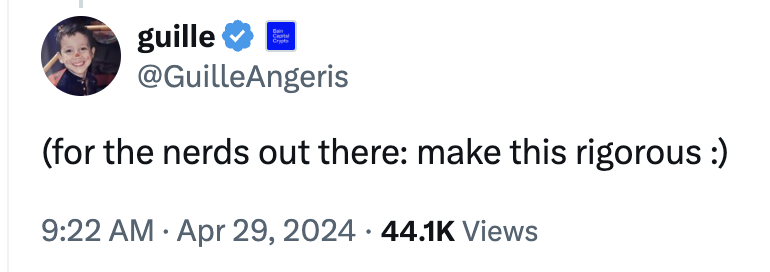One last desperate attempt to illustrate why unique prime factorization isn't just an obvious tautology:
https://x.com/RadishHarmers/status/1282128425499742208
Suppose you worked at a bank that only had quarters and dimes. There's lots of amounts of money you can pay out: You can make payments of a dollar, or $1.50, or $2.60, or 45¢, lots of things.
And you can combine payments too: Since you can pay $1.50 and you can pay $2.60, you can also combine them into a payment of $4.10. Put another way, we can decompose a payment of $4.10 into two separate payments of $1.50 and $2.60.
Now it turns out, there are two payments that don't have any decompositions here: we can pay out 10¢, but we can't do it as a combination of two separate payments. And we can pay out 25¢, but we can't do it as a combination of two separate payments.
So 10¢ payments and 25¢ payments are prime, in this context. They can't be made as combinations of other things. That's all it means to be "prime".
And yet, if we want to pay out a dollar, we can decompose it into combinations of not-further-decomposable payments in several different ways: we can pay a dollar as ten payments of 10¢, or four payments of 25¢, or five payments of 10¢ and two payments of 25¢.
We don't have unique decomposition into indecomposable pieces in this context. There's no logical law that whenever you have some values and ways of combining them, there can be only one way to decompose a value into indecomposable pieces.
When a combining operation does have unique decompositions into indecomposable pieces, it's special. Things don't automatically work this way for every combining operation. Becoming convinced some combining operation is so special requires evidence, a reason, an explanation.
This is the sense in which it's not obvious that multiplying whole numbers has this special property. It's not obvious, because lots of combining operations don't work this way.
We only know multiplication of whole numbers works this special way because mathematicians figured out a reason it does, thousands of years ago. But if no one ever told you the explanation they figured out, that knowledge has been hidden from you.
That's what the thread was about. If you want that explanation, you can find it in that thread or at .
https://x.com/RadishHarmers/status/1282490642166435841
• • •
Missing some Tweet in this thread? You can try to
force a refresh


















